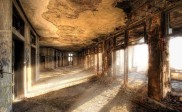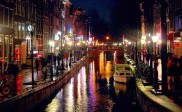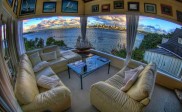How to Create Forced Perspective Photos
What is forced perspective and how is it used?
Forced perspective is a still life photography technique that allows you to take gorgeous photos even if you do not own a state-of-the-art camera. The use of visual/optical illusion in art produces something that is unreal that the artist can proudly own as their own creation. As the term ‘forced’ implies, this element of photography involves the use of principles or techniques (depth perception and camera placement) that will produce photographs that will not be true to nature, but will give the viewer the impression that what they are looking at is actually larger, smaller, closer or farther away than it really is. In this case of photography the man behind the camera shoots an image or scene so that will force or manipulate viewers to see things from a different perspective.
Forced perspective is used in architecture as well as landscaping, cinematography and theatre to create an illusion of space. The Greeks are known to have used forced perspective in their architectural structures by making their columns narrower towards the top. This created an illusion of greater height so that buildings appeared taller than they were. In cinematography and theatre, forced perspective is used to create an illusion of vast space. The reality is that the Greek buildings were not as tall as they looked and the space in the theatre is not as vast as it seems.
How to create forced perspective photos
Firstly you would want to follow some basic procedures. These are:
- Use a tripod.
- Use wide angle lens as they visually expand perspective while telephoto lenses force perspective to compress.
- Use adequate f-stop (f/16, or f/22 is ok) to achieve the right depth of field. Consider using aperture priority or manual mode to prevent automatic changes to your f-stop setting.

Photo by Delacorr
Taking the shots
1. Give yourself time
It feels good when you can take an impromptu shot and get it right, but for the most part you may have to wait on your subject to get into an ideal space or location (such as the sun or moon) or you may have to coax your subject (man or animal etc.) into the position you want.
2. Take additional shots
Take several shots of the scene or object of your photograph. You will have more to work with, and stand a better chance of coming up with just the right shot.
3. Tests your field of depth
Playing around with the field of depth for the shot will give you a better idea of which field will work best for that particular photograph. Moving your subject varying distances from the object will allow you to see how each setting affects the photograph, and may even change your original perspective of the shot.
4. Pay attention to framing and composition
Getting the framing and composition of your photograph right is essential to achieving the right perspective. Never allow any of your subjects to extend beyond the frame. Pre-framing is ideal for comparing objects using false perspective if your subject is bigger than your object. Make sure your primary subject is far away so that it does take over the frame yet not so large that it is outside the frame. Conduct your pre-testing and frame setting when necessary.
5. Pay attention to context
Objects that will break the false perspective you wish to achieve should be left outside the frame. By doing this you will not allow those who view your photo to get the impression that the perspective is forced. Your photo should manipulate the viewer’s vision so that they see only what you want them to see.
You can also add objects to your frame that will add to the context of the photo. Adding objects that are unrelated can change the context so pay keen attention to what is included in you forced perspective photos.
6. Choose an ideal location
Working in a wide open space will give you full control when shooting forced perspective photographs. You will have the range to work and experiment with the field of depth. Try to choose locations that can add to your creativity and can give a sense of uniqueness. Locations where you can include the horizon make great options.



